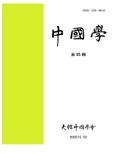- 영문명
- A Study on the Inverted causative construction in Modern Chinese : Focusing on subjectification and expansion of construction
- 발행기관
- 대한중국학회
- 저자명
- 남양우(Ryang-Woo Nam)
- 간행물 정보
- 『중국학(구중국어문론집)』第92輯, 173~196쪽, 전체 24쪽
- 주제분류
- 인문학 > 기타인문학
- 파일형태
- 발행일자
- 2025.09.30
5,680원
구매일시로부터 72시간 이내에 다운로드 가능합니다.
이 학술논문 정보는 (주)교보문고와 각 발행기관 사이에 저작물 이용 계약이 체결된 것으로, 교보문고를 통해 제공되고 있습니다.

국문 초록
본고는 도치초래구문의 몇 가지 특성에 주목하였다. 그것은 동사의 논항과 구문의논항이 불일치 한다는 점, 이중목적어 구문과 형식적으로 동일하다는 점, 그리고 구문의미 및 구문논항에 부합하는 동사가 존재하지 않는다는 점이다. 본고는 이러한특성을 가지는 이유가 도치초래구문이 이중목적어 구문과 관련성이 있기 때문이라고보고, 주관화 및 구문의 확장이라는 관점에서 두 구문의 관련성을 포착해 보고자 시도하였다.
도치초래구문은 이중목적어 구문과 동일한 형식을 가지면서 동시에 초래의미를 나타낸다는 점에서 공통적 속성이 있다. 그러나 이중목적어 구문의 NP1이 유정명사인데 반해, 도치초래구문의 NP1은 무정명사라는 점, 그리고 이중목적어 구문은 전달의미가 있으나 도치초래구문은 전달의미를 찾기 어렵다는 점에서 두 구문은 다르다. 그럼에도 불구하고 도치초래구문과 이중목적어 구문은 밀접한 관련이 있다. 주관성의 강화에 따라 주어의 통제력이 약해지면서 무정명사가 주어인 ‘NP1+VP+NP2+NP3’ 구문이 출현할 수 있다. 그리고 내부적으로 구문논항의 조정이 이루어지면서 무정명사가 주어인 ‘NP1+VP+NP2+NP3’ 구문은 이중목적어 구문으로 볼 수 없는 다른성격의 구문이 되는데, 그것이 도치초래구문이다. 즉 도치초래구문은 이중목적어 구문이 주관화되면서 출현한 산물이라 볼 수 있다.
구문은 전형적 구문에서 비전형적 구문으로 확장하려는 경향이 있다. 이것은 제한된 숫자의 구문으로 다양한 의미를 나타내려고 하는 언어사용자의 욕구에 의한 것이다. 도치초래구문과 이중목적어 구문은 형식적, 의미적으로 관련성이 있고 특히 도치초래구문의 이동형은 넓은 의미에서 ‘전달’ 의미도 있다고 볼 수 있다. 따라서 이동형 도치초래구문이 이중목적어 구문에 기반하여 생긴 후 상태변화형 및 소모형 도치초래구문으로 확장하였다고 볼 수 있다.
영문 초록
The inverted causative construction has common properties with the doubleobject construction in that it has the same form and expresses a causative meaning. However, the two constructions are different in that the NP1 of the double-object construction is a animate noun, whereas the NP1 of the inverted causative construction is an inanimate noun, and the double-object construction has a transfer meaning, but it is difficult to find a transfer meaning in the inverted causative construction. Nevertheless, the inverted causative construction and the double-object construction are closely related. As subjectivity strengthens and the subject's control weakens, the structure 'NP1+VP+NP2+NP3' with an inanimate noun as the subject may appear. And as the internal adjustment of construction arguments takes place, the ‘NP1+VP+NP2+NP3’ construction with an inanimate noun as the subject becomes a construction with a different character that cannot be viewed as a double-object structure, which is the inverted causative construction. In other words, the inverted causative construction can be seen as a product that emerged when the double-object construction became subjectification.
The construction tends to expand from typical to atypical construction. This is due to the language user's desire to express a variety of meanings with a limited number of constructions. The inverted causative construction and the double-object construction are formally and semantically related, and in particular, the transitive type inverted causative construction can be seen as having the meaning of ‘transfer’ in a broad sense. Therefore, it can be seen that the mobile inverted causative construction was created based on the double-object construction and then expanded into the state-changing type and consumption type inverted causative construction.
목차
1. 서론
2. 도치초래구문의 특징
3. 구문으로서의 도치초래 구문
4. 결론
참고문헌
키워드
해당간행물 수록 논문
- 중국학(구중국어문론집) 제92집 목차
- “愚者之旅”与“易”之变——塔罗大阿卡纳与《易经》六十四卦的过程比较研究
- 『목천자전』의 역사 기억과 제국 서사
- 여말선초(麗末鮮初) 사행시에 나타난 해항도시 연구
- ‘시진핑문화사상’에 내재된 문화정치적 함의 - 후난TV《마르크스가 공자를 만났을 때(当马克思遇见孔夫子)》를 중심으로
- 『說文解字』의 亦聲字 연구(1) - 形聲과 會意의 경계를 넘는 구조적 사유
- 蒲松龄『聊斋俚曲集』中“比”字句探微——兼论“比”字句的历时演变
- 18세기 티베트어 어두 복자음에 관한 연구 - 『御製五體淸文鑑』을 중심으로
- 현대중국어 도치초래구문에 관한 고찰 - 주관화와 구문확장을 중심으로
- 중국어 공손표현의 공손성 강도와 사용 양상 분석
- AI-Hub 구어체 중·한 말뭉치 활용 촉각어 ‘热’의 한국어 의미 확장 연구 - 개념적 은유·환유 네트워크 분석을 중심으로
- 교육과정-교과서 연계성 분석틀을 활용한 고등학교 『중국어』 교과서 비교 분석 - 2022개정 교육과정 검정 6종 교과서를 중심으로
- 汉字文化圈视阈下汉字词学习的优势与障碍分析 ——以韩国为例
- 낙관적 비관주의자, 거마이(戈麦) 시(诗)의 역설과 구원
- 한·중 드라마 콘텐츠 산업 비교 연구 - 산업 구조와 글로벌 전략을 중심으로
- 16∼17세기 갤리언 무역에 의한 명대 은 유통량과 경제적 충격의 구조적 분석
- 全面抗战时期韩人在华办报活动研究——以《东方战友》为中心
- 종교다원주의 관점으로 본 천잉닝(陳攖寧) 선학(仙學)사상의 현대성 고찰
- 근대 중국의 국민경제론과 개혁방안 - 국가 주도 경제의 기원
- 농자판(农家饭), 도농 정체성, 그리고 양생 - 중국판 시골밥의 문화적 다의성
- 중국의 소프트파워 담론과 문화외교 전략 - 도전과 과제에 대한 소고
- 청년 친화성을 중심으로 한 항저우 모델 연구
- 중국의 라이브커머스에서의 왕홍(网红)의 역할과 소비자 지속사용의도에 미치는 영향
- 中国对韩国签证政策的演变特征研究 —— 以2016~2024年期间为研究中心
- Z세대 중국인 유학생의 유학동기가 진로결정수준에 미치는 영향 - 디지털역량의 매개효과
참고문헌
교보eBook 첫 방문을 환영 합니다!

신규가입 혜택 지급이 완료 되었습니다.
바로 사용 가능한 교보e캐시 1,000원 (유효기간 7일)
지금 바로 교보eBook의 다양한 콘텐츠를 이용해 보세요!



